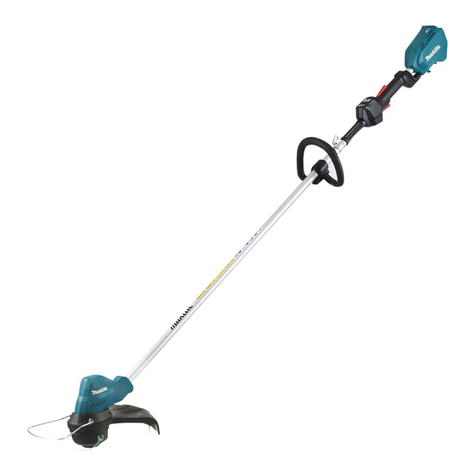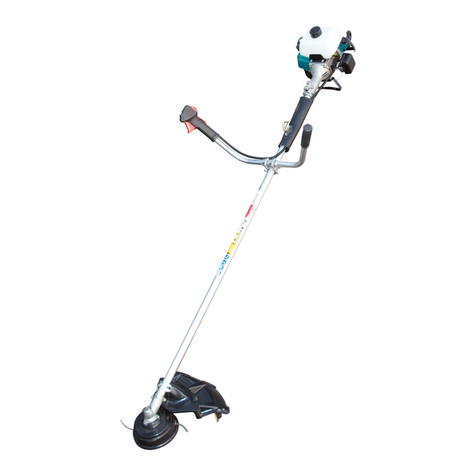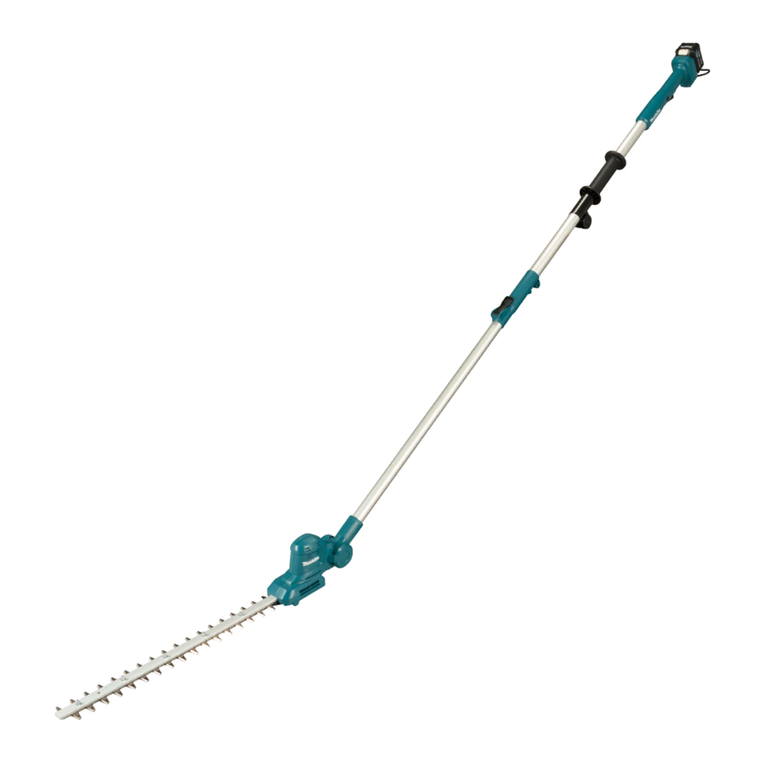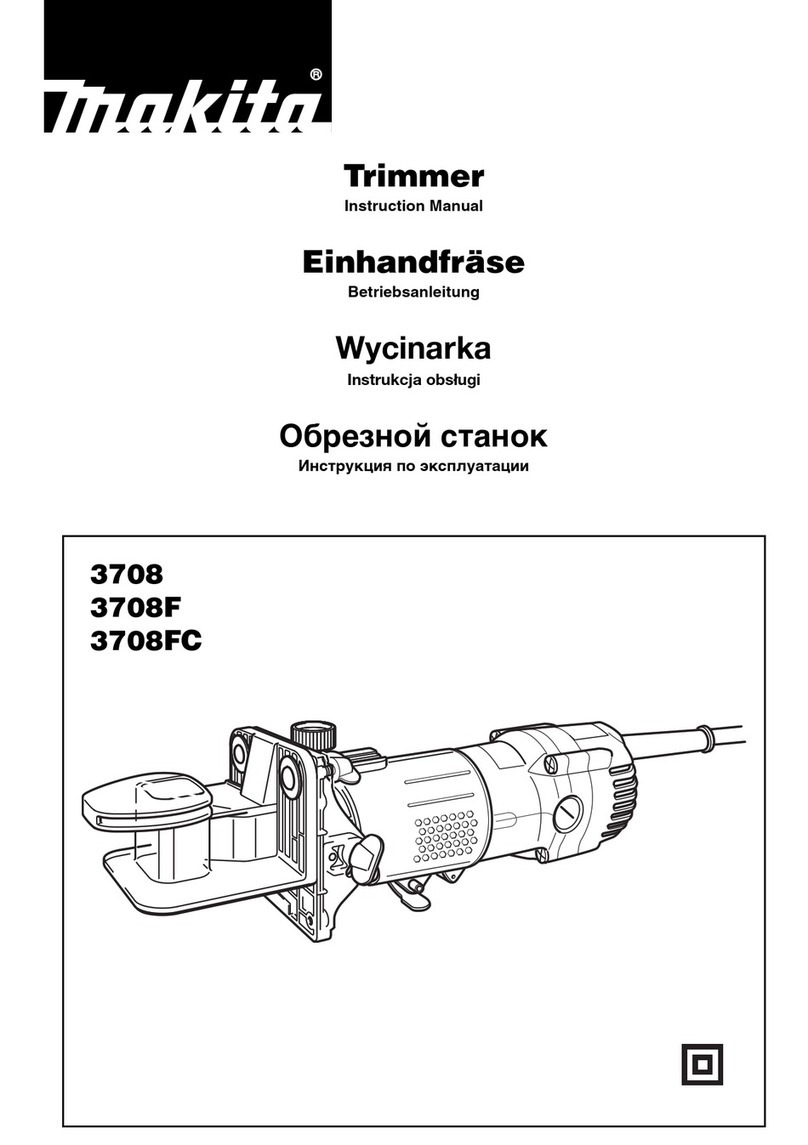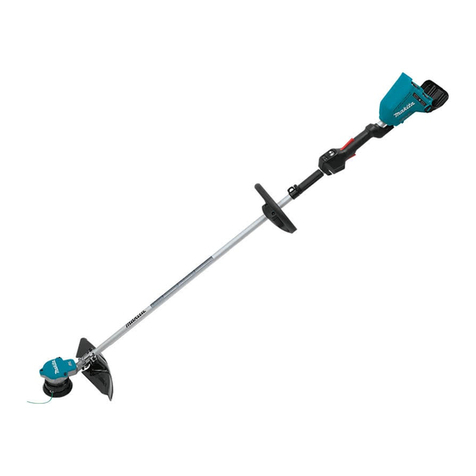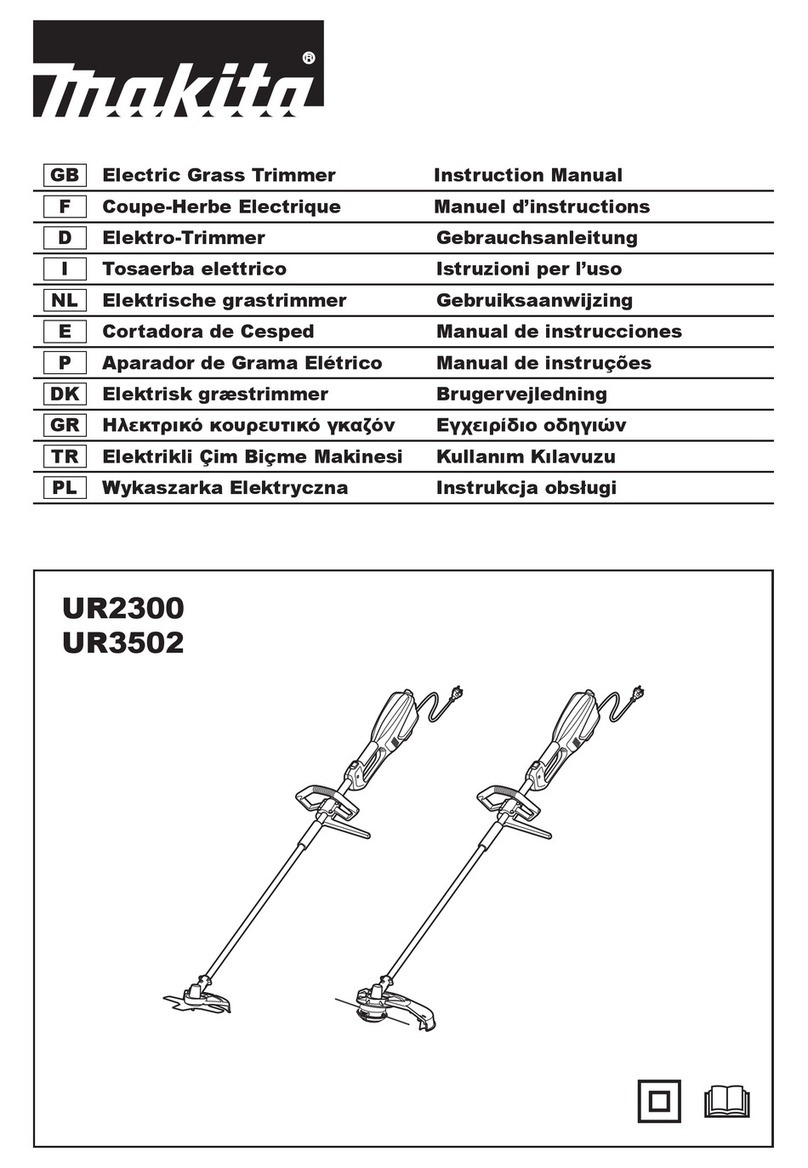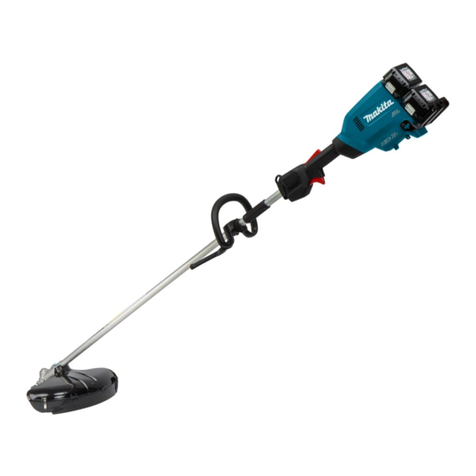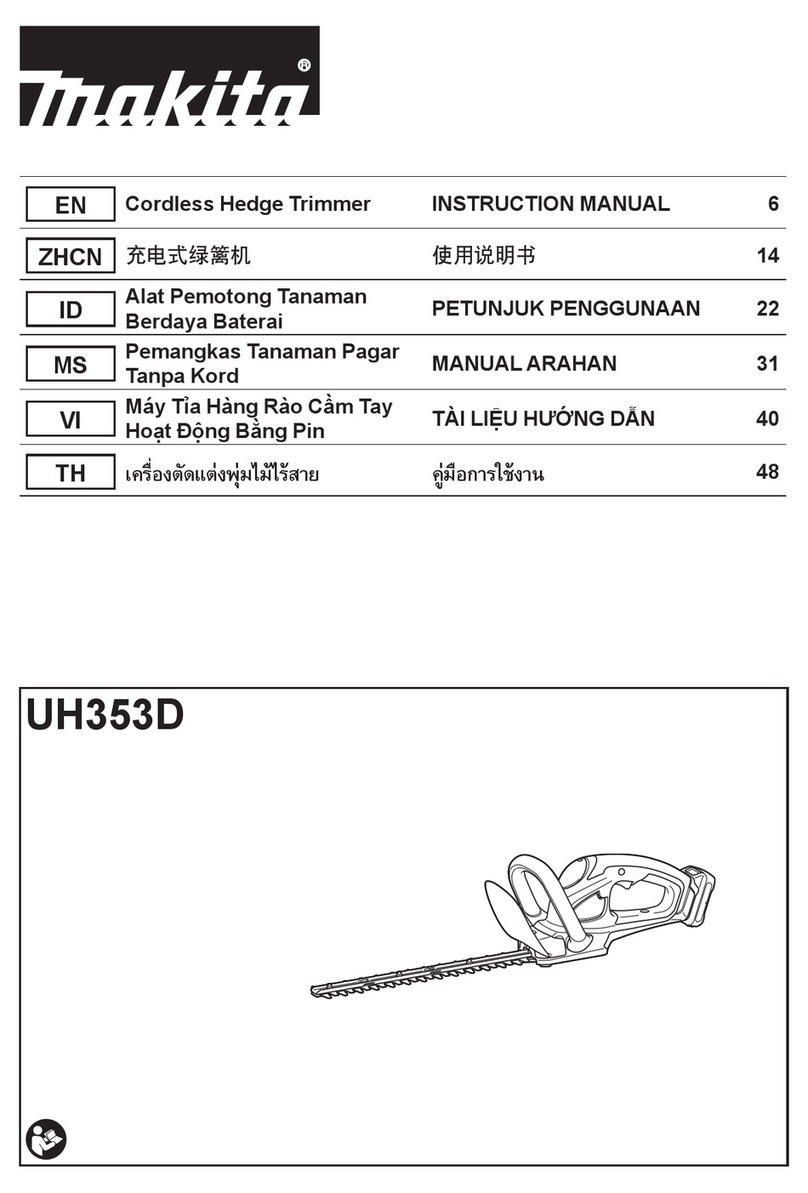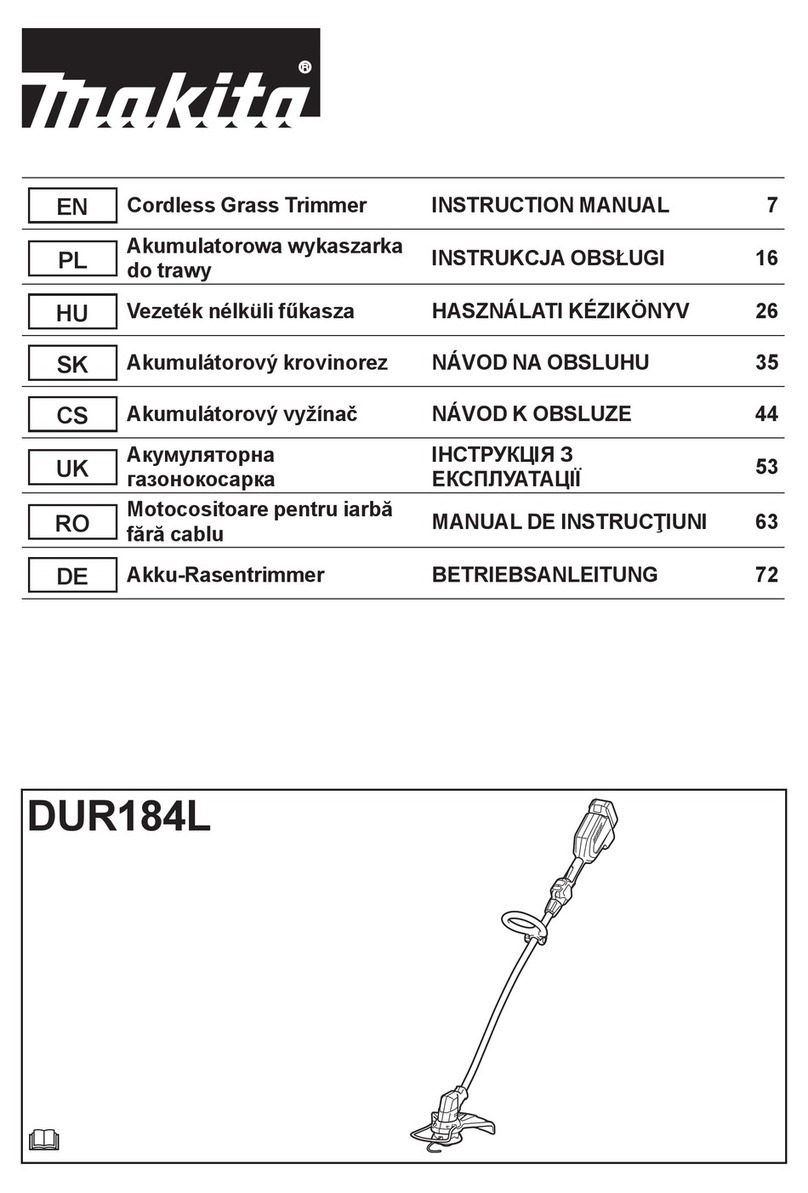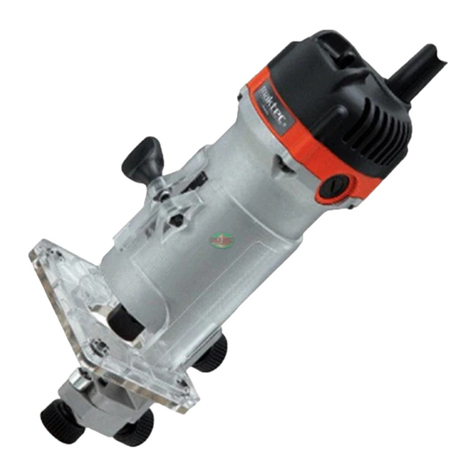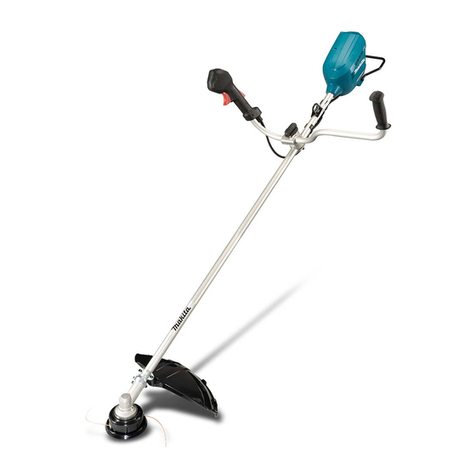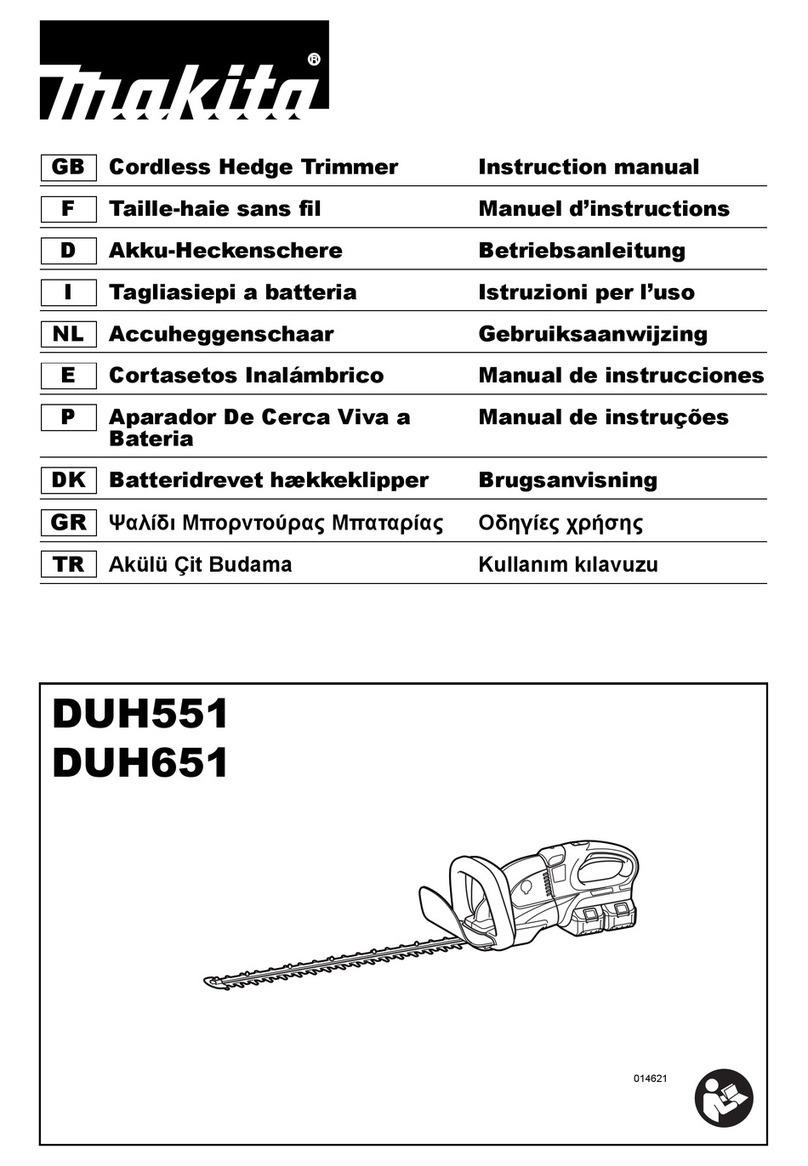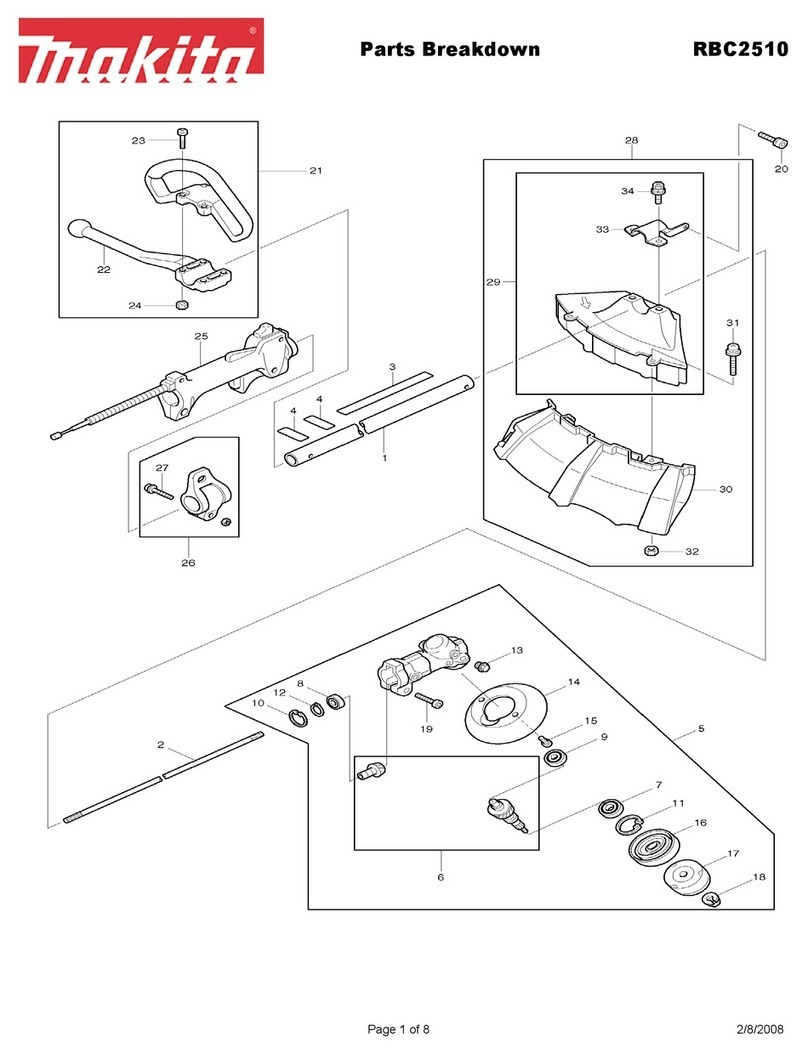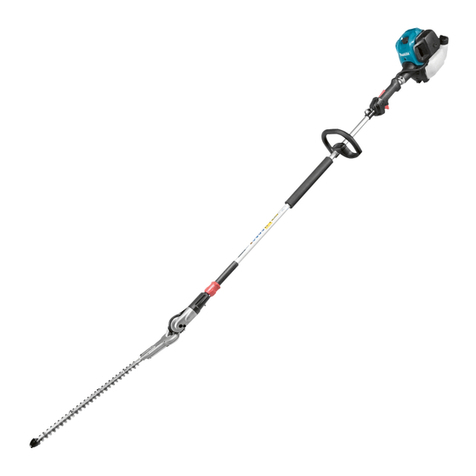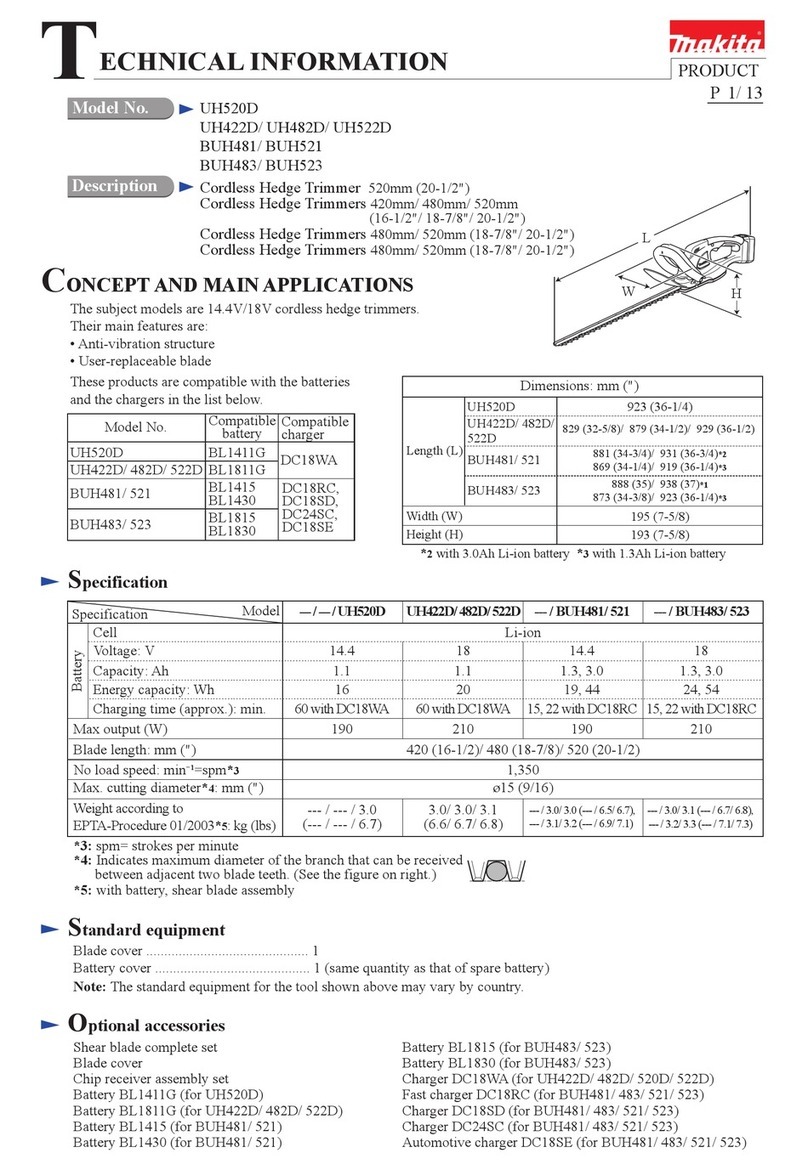
10
IMPORTANT SAFETY
INSTRUCTIONS GEB068-6
WARNING! Read all safety warnings and all
instructions. Failure to follow the warnings and
instructions may result in electric shock, fire and/or
serious injury.
Save all warnings and
instructions for future reference.
Intended use
1. The cordless grass trimmer/brushcutter/string trimmer
is only intended for cutting grass, weeds, bushes and
undergrowth. It should not be used for any other
purpose such as edging or hedge cutting as this may
cause injury.
General instructions
1. Never allow people unfamiliar with these instructions,
people (including children) with reduced physical,
sensory or mental capabilities, or lack of experience
and knowledge to use the tool. Children should be
supervised to ensure that they do not play with the
tool.
2. Before starting the tool, read this instruction manual to
become familiar with the handling of the tool.
3. Do not lend the tool to a person with insufficient
experience or knowledge regarding handling of
brushcutters and string trimmers.
4. When lending the tool, always attach this instruction
manual.
5. Handle the tool with the utmost care and attention.
6. Never use the tool after consuming alcohol or drugs,
or if feeling tired or ill.
7. Never attempt to modify the tool.
8. Follow the regulations about handling of brushcutters
and string trimmers in your country.
Personal protective equipment (Fig. 1)
1. Wear safety helmet, protective goggles and protective
gloves to protect yourself from flying debris or falling
objects.
2. Wear ear protection such as ear muffs to prevent
hearing loss.
3. Wear proper clothing and shoes for safe operation,
such as a work overall and sturdy, non-slip shoes. Do
not wear loose clothing or jewelry. Loose clothes,
jewelry or long hair can be caught in moving parts.
4. When touching the cutting blade, wear protective
gloves. Cutting blades can cut bare hands severely.
Work area safety
1. Operate the tool under good visibility and daylight
conditions only. Do not operate the tool in darkness or
fog.
2. Do not operate the tool in explosive atmospheres,
such as in the presence of flammable liquids, gases or
dust. The tool creates sparks which may ignite the
dust or fumes.
3. During operation, never stand on an unstable or
slippery surface or a steep slope. During the cold
season, beware of ice and snow and always ensure
secure footing.
4. During operation, keep bystanders or animals at least
15 m away from the tool. Stop the tool as soon as
someone approaches.
5. Before operation, examine the work area for stones or
other solid objects. They can be thrown or cause
dangerous kickback and result in serious injury and/or
property damage.
6. WARNING: Use of this product can create dust
containing chemicals which may cause respiratory or
other illnesses. Some examples of these chemicals
are compounds found in pesticides, insecticides,
fertilizers and herbicides. Your risk from these
exposures varies, depending on how often you do this
type of work. To reduce your exposure to these
chemicals: work in a well ventilated area, and work
with approved safety equipment, such as those dust
masks that are specially designed to filter out
microscopic particles.
Electrical and battery safety
1. Do not expose the tool to rain or wet conditions. Water
entering the tool will increase the risk of electric shock.
2. Do not use the tool if the switch does not turn it on and
off. Any tool that cannot be controlled with the switch
is dangerous and must be repaired.
3. Prevent unintentional starting. Ensure the switch is in
the off-position before installing a battery pack, picking
up or carrying the tool. Carrying the tool with your
finger on the switch or energising the tool that have
the switch on invites accidents.
4. Recharge only with the charger specified by the
manufacturer. A charger that is suitable for one type of
battery pack may create a risk of fire when used with
another battery pack.
5. Use the tool only with specifically designated battery
packs. Use of any other battery packs may create a
risk of injury and fire.
6. When battery pack is not in use, keep it away from
other metal objects, like paper clips, coins, keys, nails,
screws or other small metal objects, that can make a
connection from one terminal to another. Shorting the
battery terminals together may cause burns or a fire.
7. Under abusive conditions, liquid may be ejected from
the battery; avoid contact. If contact accidentally
occurs, flush with water. If liquid contacts eyes, seek
medical help. Liquid ejected from the battery may
cause irritation or burns.
Putting into operation
1. Before assembling or adjusting the tool, remove the
battery cartridge.
2. Before handling the cutter blade, wear protective
gloves.
3. Before installing the battery cartridge, inspect the tool
for damages, loose screws/nuts or improper
assembly. Sharpen blunt cutter blade. If the cutter
blade is bent or damaged, replace it. Check all control
levers and switches for easy action. Clean and dry the
handles.
4. Never attempt to switch on the tool if it is damaged or
not fully assembled. Otherwise serious injury may
result.



